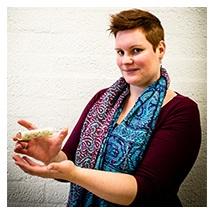"It is very difficult to choose one favourite object," says heritage curator Liselotte Neervoort. "We have so many beautiful things and interesting stories in the various collections of the VU. The past two years I have been sniffing around in all these collections. From old research equipment to stuffed birds and fossils from the Biology and Geology teaching collections. But also in the VU Heritage Collection with objects such as the portraits of professors, the first pedestal staff and the seal of the Virgin. For each collection, I mapped out what we know about it and who still uses it. The aim was to select what should be preserved as VU heritage."Sharing enthusiasm and making it visible
"I have seen many special things and talked to people who still have wonderful memories and stories about them. I want to make their and my enthusiasm about these collections visible. This exhibition made that possible, and from next year on, presenting heritage will be a permanent part of my job as curator. I hope to be able to let many more experts and (guest) curators have their say then!
Exciting story and visually interesting
My final choice has a bit of everything in it. The object was purchased by a VU professor who stood at the basis of a new VU faculty. It has a broader social story, and it looks interesting. What more could you want? I received the object at the beginning of this year. Martin Slaman, a research engineer in Physics, came to me via Ab Flipse. It had been in their cupboard for a while and they were cleaning it up.
In search of a new research field
When physicist Gerard Sizoo (1900-1994) became one of the first professors of the newly founded Wis- en Natuurkundige Faculteit in 1930, he had to look for a research field. Preferably one in which there was a lot of new research to be done, but not too expensive. He chose radioactivity and in 1938 got a neutron generator, one of the first large devices at the VU. For this he used "heavy water", 2H2O, or D2O, dideuterium oxide.
World War II and nuclear bombs
Sizoo ordered this heavy water from the Norsk Hydro plant in Norway. During the Second World War, this factory fell into German hands and was attacked several times by the Allies to prevent the Nazis from using heavy water to make nuclear bombs. The factory never became active after the war, so this box of ampoules is one of the few that contains heavy water from the Norsk Hydro factory.
Heavy water can be used as a moderator in nuclear fission reactions, but it is not radioactive itself. We only show the packaging in which Sizoo received the ampoules with heavy water at the time - you can see an example of the ampoule in the photo.
